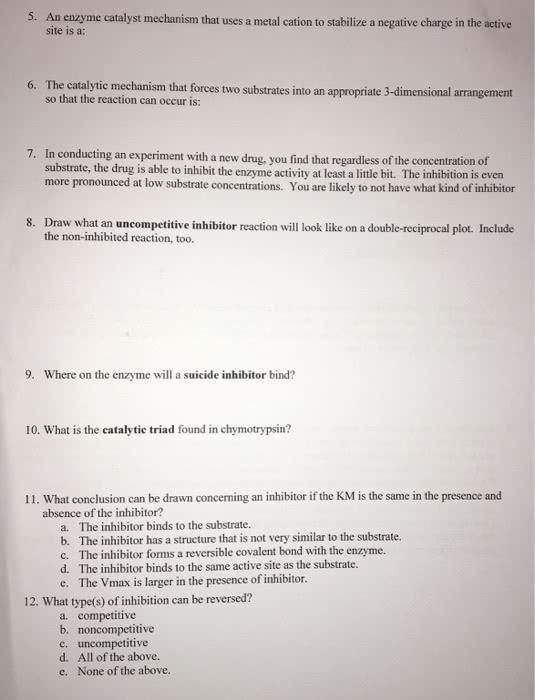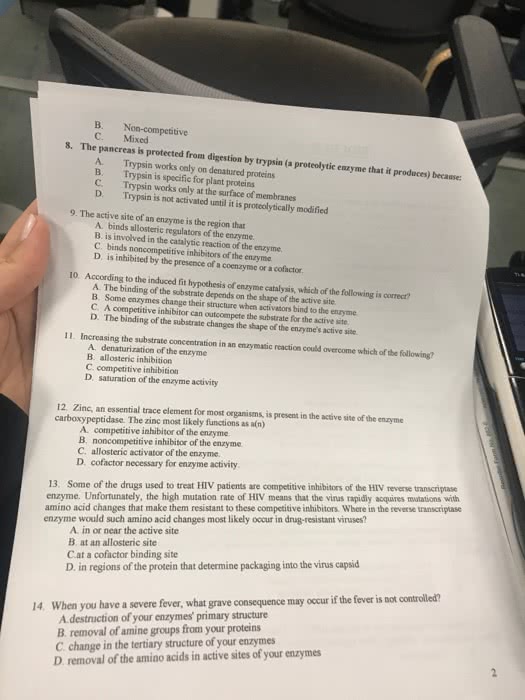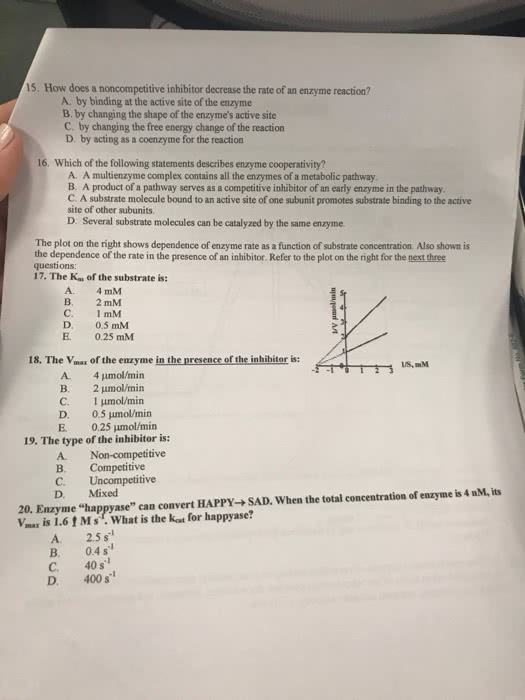BIOC 1430 Lecture Notes - Lecture 14: Non-Competitive Inhibition, Histidine Decarboxylase, Competitive Inhibition
Document Summary
Inhibition is loss of catalytic activity of enzymes. Enzyme inhibitors are substances that slow or stop the normal catalytic function of an enzymes by biding to it. A change in protein structure occurs so that the active site is prevented from binding with its proper substrate. There are 3 modes by which this inhibition can take place: reversible competitive inhibition, reversible non-competitive inhibition. Occurs when a compound with a structure very similar to the substrate competes for the active site on the enzyme this competitive inhibitor fits in to the active site of the enzyme. As long as the inhibitor occupies the active site, the substrate cannot bind to it, resulting in decreased enzyme activity. Held together by weak interaction; will break up over time. Empty active site is ready for new occupant. On a random basis, either inhibitor or normal substrate will bind. By increasing the substrate concentration competitive inhibition is reversed.




